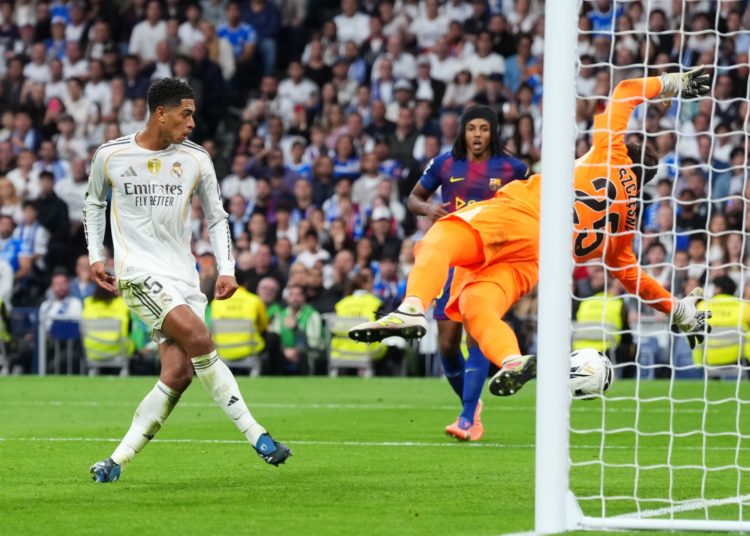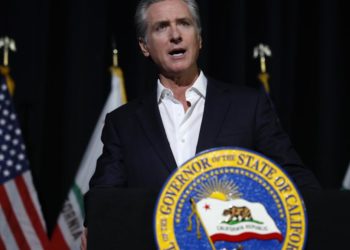The air is
thick with talk of revenge, and it’s not limited to Donald Trump’s personal vendetta
against individual enemies like James Comey, Letitia James, and John Bolton. In
2023, when Trump proclaimed to a conservative audience, “I
am your retribution,” he said that it would be “for those who have been
wronged and betrayed,” no small group in Trump’s mind. For years he had been telling
his followers that they had been betrayed by the nation’s leaders on diversity
policies, trade, immigration, foreign wars, and much else. He would be their
instrument for a historic settling of scores.
Trump’s own desire for personal revenge
hardly needs a complex psychological explanation. His emotions are on full
display. “I
hate my opponent,” he declared at the Charlie Kirk memorial, an event where
revenge against “the left” was a prominent theme, despite the call for
forgiveness by Kirk’s widow.
For Trump, revenge is a perfectly
rational strategy, consistent with his other efforts to consolidate power. “IF
YOU GO AFTER ME, I’M COMING AFTER YOU!” he wrote on Truth Social in August
2023 and, sure enough, he has come after his enemies, with considerable effect.
He has intimidated an entire political party into obsequious submission and had
some success doing the same to universities, media, law firms, and other
institutions. If voters in 2024 thought his threats were just bluster, they
must know now that, as Alaska Senator Lisa Murkowski said, “retaliation
is real.”
While there is no mystery about
Trump’s interest in vengeance, there is a larger and more difficult question
about American politics and culture. How did we get to the point where one of
the two major parties and just over half the electorate were willing to empower
a leader who was openly intent on revenge and is now using state power for that
purpose?
When Trump promises his aggrieved
supporters retribution, he is promising payback for the transformation in
American life brought about by the progressive currents in liberalism since the
mid-twentieth century. That transformation did not involve only racial change,
though that is where things began. The Black freedom struggle of the
mid-twentieth century set off a series of movements upending almost every
traditional hierarchy: white over Black, men over women, straight over queer, the religious over the irreligious and more secular. Liberals and progressives
challenged virtually the whole system of social precedence: who stands higher,
who comes first, whose values and interests are identified with the whole of
America. They undertook that astonishingly ambitious project in a nation where
the fear of being diminished, overrun, emasculated, “mongrelized,” or denied
historic privileges and immunities has always been a potent source of political
reaction.
The backlash against the social
revolutions of the twentieth century did not appear suddenly with Trump. It
started as soon as the egalitarian movements did. So why revenge now? What
additional fuel was added to the original fire? What happened in recent decades
that enabled Trump to take over the Republican Party and turn it into a
far-right movement of revenge?
From Richard Nixon in 1968 to
Ronald Reagan in 1980, Republicans courted the forces of backlash to win
elections, but in office they didn’t fully reverse liberal reforms, nor did
they even try. Temperamentally, Nixon prefigured Trump, and he also abused his
executive powers. In substantive policy, though, Nixon’s presidency was mostly a
continuation of midcentury liberalism. His administration introduced
affirmative action in private employment and desegregated Southern schools. He signed
laws vastly increasing environmental and economic regulation, came close to
enacting a nationally guaranteed income, and proposed a broader national health
insurance plan than any later Democratic president dared endorse.
Although Reagan carried out a more consistently
conservative agenda, even his presidency and George H.W. Bush’s didn’t halt the
social movements for racial and gender equality. To be sure, Reagan’s policies
on taxes, spending, business, and labor sharply increased economic inequalities.
Reagan’s impact fell hardest on what by 1980 was already the weakest part of
the liberal coalition, the unions.
But two of Reagan’s Supreme Court appointments
(Sandra Day O’Conner and Anthony Kennedy) and one of Bush’s (David Souter)
provided pivotal votes not just for preserving key liberal precedents on race
and gender but for extending them in regard to LGBTQ people. Reagan signed an
amnesty for three million illegal immigrants, agreed to make Martin Luther
King Jr.’s birthday a national holiday, and had none of Trump’s dark anger and
hostility. Compared to Trumpism, Reaganite conservatism was only half a
counterrevolution.
The turn toward a full
counterrevolution and ultimately Trumpism began in the 1990s and chiefly involved
developments within the conservative movement and Republican Party. At the risk
of some oversimplification, we can put those developments under two headings:
fear and aggression.
The Fear Factor
From the 1990s to the early 2020s,
racial and cultural change created a sense of rising opportunity on the left
and rising danger on the right. Liberals became righteously overconfident about
the future. Conservatives became obsessed with impending political catastrophe.
America’s changing demography
affected both sides of the political divide. Until the late twentieth century, the
United States was a 90–10 society: Americans thought of the country’s racial
makeup as 90 percent white, 10 percent Black. Even whites who were agitated by the
civil rights and Black Power movements knew that Blacks could never take power
nationally.
Immigration, however, turned America into more of a
50–50 society, just as it also became a 50–50 country politically, with the two
major parties closely matched in electoral strength. Based on new U.S. census
projections in the 1990s, many analysts even began proclaiming a future when
whites would become a minority. The inference many people drew was that the United States was approaching a tipping point, when politics would shift decisively toward a left
powered by growing numbers of people of color. Barack Obama’s election seemed
to validate these expectations.
The demographic forecasts have been deeply misleading. While the racial and ethnic
makeup of the American people has been changing, whites are not close to becoming
a minority, much less losing their dominant position in the economy and
politics. The misleading forecasts assume that all immigrants from Latin
America and their future descendants, even if they intermarry with non-Hispanic
whites, will belong to a permanent racialized minority, as though the millions
of white-passing and white-identifying Hispanics suffer from delusions about
their ability to assimilate. In fact, the majority of Hispanics do not self-identify as “people of color.” Neither were
all people of color destined to vote as a bloc for Democrats.
Nonetheless, the fiction of an imminent reversal in the
position of whites became a political fact of the first importance at a time
when other cultural developments increased conservative anxieties. The share of
Americans self-identifying as
Christian was falling,
down from 90 percent in 1972 to 64 percent in 2020, while the proportion of “nones”—people who identify with no
religion—rose from 5 percent to 30 percent. Rising percentages of young people identified as LGBTQ. Young women were surpassing young men in education and employment.
Progressives mostly celebrated these changes and pressed for
reckonings and reparations, unaware that they were sleepwalking into revenge. Conservatives
saw the same development as signs of national decline. They feared that
snowballing racial and cultural changes in the American people would
permanently cost them control of the nation.
By the early 2000s, the conservative story about Democratic
responsibility for national decline had resonance among many working-class
whites for another reason: It seemingly explained the loss of economic security
they were experiencing.
The decline of manufacturing employment has been a long-term
process that’s dealt a double blow to liberal hopes. Beginning in the
mid-1970s, Black communities were devastated
by the loss of industrial jobs and the ensuing damage to family and community
life, evident in rising family breakup and a drug crisis (heroin and crack
cocaine). That setback canceled out early gains from antidiscrimination law
and the Great Society and appeared to discredit liberal reform. In the early
2000s, the same sequence—loss of manufacturing jobs, rising family breakup, and
a drug crisis (opioids this time)—unfolded in white working-class communities.
That brought a second blow to liberal hopes: the turn to the political right of
the white working-class in areas
that lost jobs to imports.
Here too Democrats went sleepwalking into revenge. By supporting the North American Free Trade
Agreement in 1994 and the opening to China later in the decade, the Democratic
Party seemed to abandon working-class interests. One political consequence was
a change in the makeup of the two parties. While college-educated whites since
the 1990s have moved toward the Democrats, the far more numerous non-college
whites have moved in the other direction. That influx changed who Republicans
were, creating an opening for right-wing populist appeals, an insurgency within
the party, and the overthrow of the old Republican leadership.
Fear of the future came to animate Republicans—fear
of “racial replacement,” fear of economic decline, fear of liberalism’s moral
influence. This wasn’t just a bottom-up panic. Right-wing politicians and media told Americans that
the nation was being stolen from them. Desperate times would require desperate
measures. Fear would underwrite aggression.
Aggression
The 1990s
might have initiated an era of good feeling in the United States. Not only was
it a prosperous decade; the collapse of the Soviet Union made irrelevant old
battles over anti-communism and foreign policy. But, instead, the United States went from
Cold War to culture war. “Now that the other ‘Cold
War’ is over, the real cold war has begun,” Irving Kristol wrote in 1993.
The new domestic war didn’t erupt
just because Democrats and Republicans became more ideologically polarized—the
usual story that political analysts tell. Republicans broke with their own
past. Newt Gingrich was the key figure in leading Republicans to put aside
bipartisan civility and treat Democrats as enemies, traitors, and sick
degenerates. New conservative media with a mass audience—Rush Limbaugh and Fox
News—relentlessly attacked Democrats and liberals in similar terms. Polarization
was strategic. It had a political logic for Republicans. Like the Cold War, the
culture war gave their party an urgent moral purpose as defenders of the
American way of life.
The Republican
Party has undergone not one but two distinct transformations since the
mid-twentieth century. Reagan’s presidency represented the triumph of the
traditional conservative wing of the party over moderate, progressive
Republicanism. Gingrich and then Trump brought a second transformation. The
difference has not just been in policy positions and populist appeals (indeed,
the party continues to cut taxes for the rich and favor business over labor).
Gingrich and Trump have modeled a different way of doing politics—relentlessly
aggressive, uninterested in compromise, indifferent to democratic norms, openly
hostile to enemies, contemptuous of the opposition.
Trump has carried the open
expression of contempt and indifference to norms to a new level, but he didn’t
initiate them. Nor is Republican rhetoric and behavior matched by similar
patterns among Democrats. Neither Obama nor Kamala Harris as candidates or in
office ever publicly projected hostility, hatred, or even anger, perhaps
because Black people and women in public life do not have the same permission
as white men to be openly angry, much less hateful. Yet the white men who have
led the Democrats in recent decades have also not given vent to the hostile
emotions Trump expresses (as when Trump in 2023 called his political enemies “vermin”).
Republicans have been more willing
than Democrats to breach long-standing norms about public civility and
restraint, while Democrats have pursued their aims by upholding norms and
making high-minded appeals for public support. Although it was Michelle Obama
who said, “When they go low, we go high,” she might as well have been speaking
for her husband and other Democratic leaders, who have shied away from
bare-knuckle politics.
Trump has
used breaches of norms strategically at least from the time he began repeating
the lie that Obama wasn’t a natural-born citizen. When he announced his
candidacy in June 2015, he characterized Mexican immigrants as “rapists” and
said they were bringing crime and drugs. Shock value helped vault his campaign
into public consciousness. Shock waves were his medium. Shock politics was the
Trump method for seizing attention, his way of reaching people who ordinarily
tuned out politics. Precisely because he did not hold back from bluntly
offensive language, he proved himself, in the eyes of many supporters, to be
more truthful and trustworthy than other politicians. He not only spoke his own
mind, he spoke thoughts of theirs that they never heard from other public
figures, and they idolized him for being their unfiltered and unashamed voice.
Trump’s public
demands for retribution work the same way. They have a shock effect that is
chilling to people who believe in normal, democratic politics and thrilling to
people who reject democratic conventions. Of course, what Trump is implicitly
saying is that since James Comey, Letitia James, Adam Schiff, and Jack Smith
went after him, he’s going after them. He’s just doing to them what they did to
him; by bringing charges against them like mortgage fraud and misuse of
classified documents, he’s saying it’s tit for tat. Some editorial
writers pair Jack Smith’s “lawfare” with Trump’s vendetta against his
enemies.
But the charges that Smith tried to
bring against Trump were not, excuse the phrase, trumped up. Trump orchestrated
an effort to prevent the peaceful transfer of power after the 2020 election. If
political leaders refuse to accept the loss of elections, democracy is
impossible. The prosecutors who “went after” Trump were upholding the principle
that no one is above the law. The prosecutors Trump has ordered to go after his
enemies are debasing that principle.
If rule of law means anything, it’s
that the power of the state not be used for vengeance. One of the central
purposes of law is to stop cycles of revenge. Republicans who go along with
Trump’s pursuit of revenge and his assertion of unconstrained presidential
power seem to be expecting that the presidency will never change hands again.
For who would ever give up such power once they had used it that way?
We are dangerously near the
precipice of an executive coup. It should never have come to this, but Democrats
have no choice now but to fight back with all the resources they can marshal. There have been other dark
times in America’s past and other dangers we have faced and overcome. We need
the courage and determination that others before us have shown in leading the
country through darkness to the other side.
The post Sleepwalking Into Revenge: The Rise of the Politics of Retribution appeared first on New Republic.




